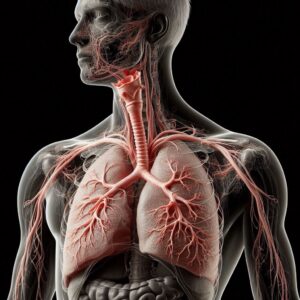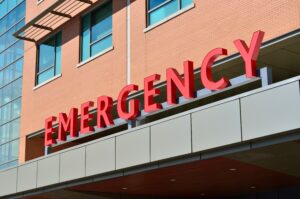Introduction
When a helicopter lands at the scene of an accident, the environment is often chaotic and unpredictable. Unlike pre-established landing zones, these temporary landing sites lack prior inspection, presenting unique challenges. In such scenarios, safety must be prioritized in a specific order: the aircraft, the crew, bystanders, and finally, the patient. This hierarchy is essential for maintaining overall safety and operational efficiency during emergency medical interventions (1, 2).
Safety Prioritization Hierarchy
1. Aircraft Safety
The helicopter is the cornerstone of the mission’s success. Ensuring its safety is paramount because any compromise can lead to catastrophic consequences. Securing the aircraft involves assessing and mitigating hazards such as uneven terrain, obstacles, debris, and potential interference from bystanders. A stable and secure helicopter ensures that it remains operational and capable of completing the mission without incident (1, 5).
2. Crew Safety
The crew’s safety is the next critical priority. The medical and flight crew are essential for both patient care and the operation of the helicopter. Ensuring their safety allows them to perform their duties effectively and without distraction. Protective measures include wearing appropriate safety gear, maintaining situational awareness, and having clear communication protocols to manage potential hazards and emergencies (2, 5).
3. Bystander Safety
Bystanders at the scene of an accident can inadvertently pose risks to themselves and the operation. Ensuring their safety involves establishing a secure perimeter around the landing zone, keeping them at a safe distance from the helicopter, and preventing them from interfering with the crew’s activities. This minimizes the risk of accidents and ensures a controlled environment for the crew to work in (3, 6).
4. Patient Safety
While the patient’s well-being is the ultimate goal, their safety is contingent upon the stability and security of the aircraft, crew, and bystanders. Once the helicopter and the scene are secured, the patient can be safely attended to and loaded into the aircraft for transport to a medical facility (4, 5).
The Importance of Prioritization
This order of prioritization may seem counterintuitive, especially to onlookers focused on the patient. However, it is essential for the following reasons:
Aircraft Stability
A secure helicopter ensures that the mission can proceed without the risk of a crash or other mechanical failures that could endanger everyone on the scene. The helicopter is a complex machine that requires a stable environment to operate safely. Any damage or instability could lead to mechanical failure or a crash, endangering the lives of the crew, patient, and bystanders. Ensuring the aircraft is secure involves thorough checks and clear communication about potential hazards, such as power lines, trees, or uneven ground (1, 5).
Crew Efficiency
A protected and focused crew can perform medical interventions more effectively and ensure a smooth transfer of the patient. The crew’s ability to function without distractions or threats to their safety is crucial. In a high-stress environment, such as an accident scene, the crew must be able to concentrate fully on their tasks. Ensuring their safety through proper gear, clear protocols, and secured environments allows them to provide the best possible care to the patient (2, 5).
Controlled Environment
Managing bystander safety reduces chaos and potential hazards, creating a safer and more predictable working environment for the crew. Bystanders, though often well-meaning, can create distractions and obstacles. They may inadvertently walk into dangerous areas, interfere with the crew’s work, or become victims themselves if an unstable situation worsens. By securing the perimeter and managing bystander behavior, the crew can maintain a controlled environment, essential for effective and safe patient care (3, 6).
Understanding HOT Load Operations
A “HOT load” refers to the loading of a patient into a helicopter while its engines and rotors are still running. This practice is often necessary in emergency situations to save critical time. However, it introduces additional risks, making the safety protocol even more vital (5).
During a HOT load, one crew member is tasked exclusively with ensuring the aircraft’s safety. This role includes monitoring the rotor blades, managing the engine controls, and maintaining overall situational awareness of the helicopter’s condition and surroundings (5).
Why Only One Crew Member Attends to the Patient During HOT Load
To onlookers, it may seem strange that only one of the two crew members is attending to the patient. However, this division of roles is crucial:
- Aircraft Monitoring: One crew member must continuously monitor the helicopter to immediately address any mechanical issues or environmental hazards that may arise (5).
- Patient Safety: The medical crew member can focus solely on the patient, ensuring their safe and efficient transfer without distractions (5).
Call to Action for On-Scene Providers
Emergency responders and on-scene providers must understand the critical importance of aircraft safety in a temporary landing zone. By appreciating the reasons behind the prioritization of aircraft, crew, bystanders, and patient safety, responders can better support HEMS operations. Here are key actions to take:
- Establish a Secure Perimeter: Quickly secure the landing area to prevent bystanders from approaching the helicopter (3, 6).
- Communicate Hazards: Inform the flight crew of any potential hazards in the landing zone (5).
- Support Crew: Assist in maintaining a controlled environment to allow the medical crew to focus on the patient (2, 5).
By working together and adhering to these safety priorities, on-scene providers can ensure that helicopter rescue operations are conducted safely and efficiently, ultimately saving lives.
Conclusion
The safety of helicopter operations at accident scenes is a complex but essential process. Prioritizing the aircraft, crew, bystanders, and patient in that order ensures that missions are conducted without unnecessary risks. Understanding and supporting these protocols is vital for all on-scene providers, reinforcing the importance of a well-coordinated and safe emergency response.
References
- Bledsoe, B.E., Porter, R.S., & Cherry, R.A. (2018). Critical Care Transport. Jones & Bartlett Learning.
- Air Medical Physicians Association (2020). Safety Considerations in Air Medical Transport.
- National Association of EMS Physicians (2019). Guidelines for Safe Helicopter Operations.
- American College of Surgeons Committee on Trauma (2021). Advanced Trauma Life Support (ATLS) Student Course Manual.
- Helicopter Association International (2019). Helicopter Emergency Medical Services Safety Manual.
- Federal Aviation Administration (FAA) Regulations and Guidelines for Air Medical Services.
- U.S. Department of Transportation, National Highway Traffic Safety Administration (NHTSA).




